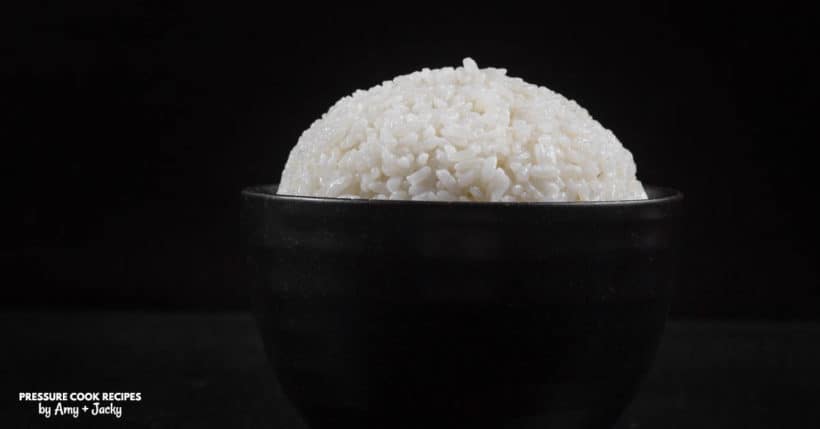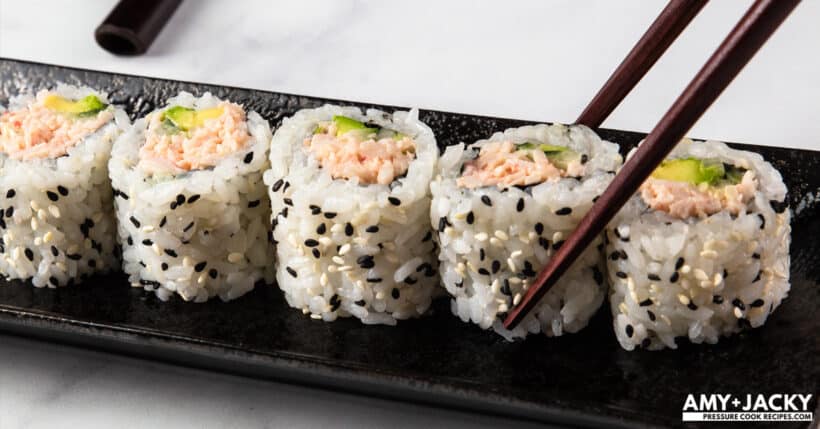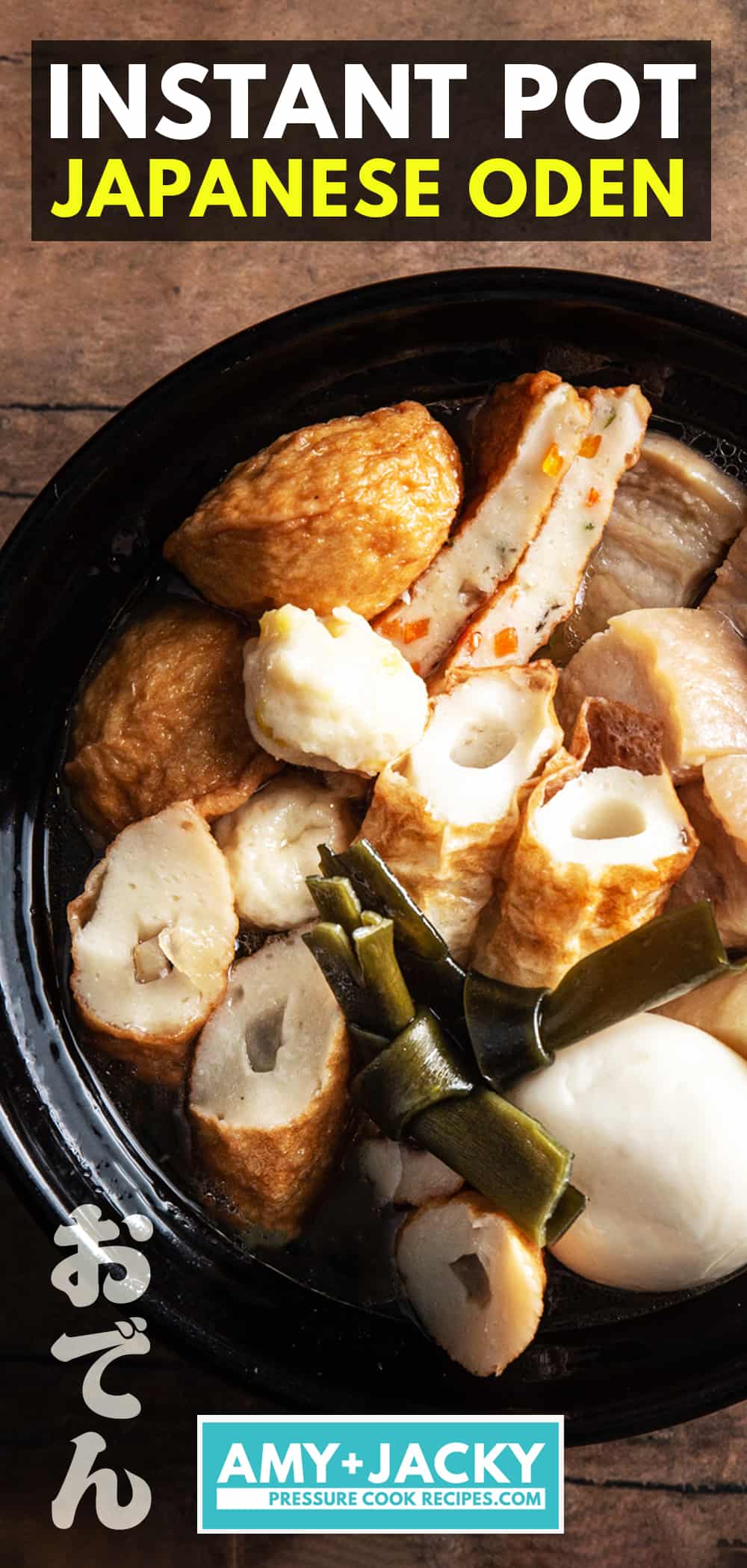Learn how to make Oden (おでん)! Comforting Japanese hot pot pack with delicious goodies. Tasty fish cakes, daikon, boiled eggs, kombu, pork belly soaked in flavorful dashi broth. Simple but satisfying Japanese comfort food.
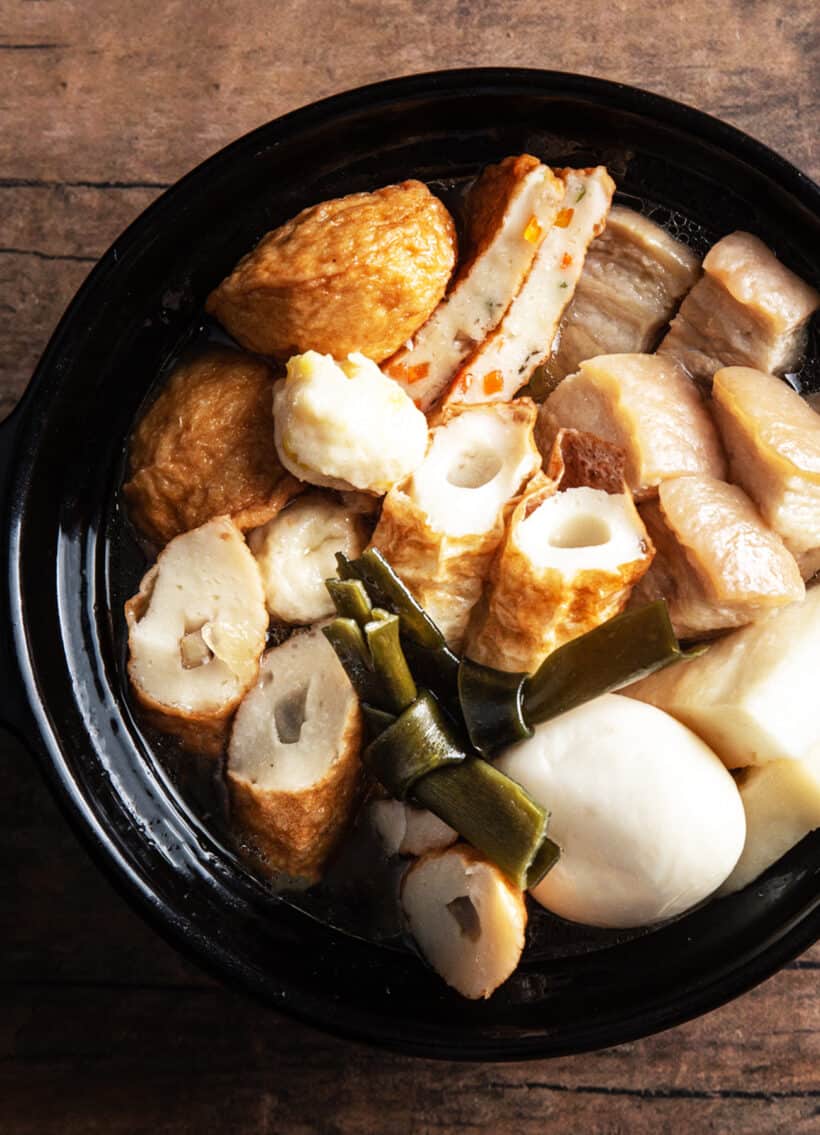
Oden reminds me of our trips to Japan & Taiwan.
What is Oden?
Oden (Japanese: おでん, 御田) is a type of Japanese hot pot (nabemono; Japanese: 鍋物). One pot of ingredients soaked in the light but flavorful umami-sweet dashi broth.
Eating oden is a lot of fun because you can pick and choose your favorites from the hot pot of goodies!
There are a variety of ingredients you can add to an oden such as Daikon, Fish Cakes, Konnyaku, Chikuwa, Mochi Kinchaku, Hanpen, Shirataki Noodles, Fried Tofu, Boiled Eggs, or Fish Balls.
It’s generally a winter food served hot or warm, but you can also find a type of oden served chilled in the summer.
Some restaurants continue to keep their flavorful broth “alive” by turning their broth into a Master Stock. This allows the flavors to continue to deepen & develop as it simmers over months and years.
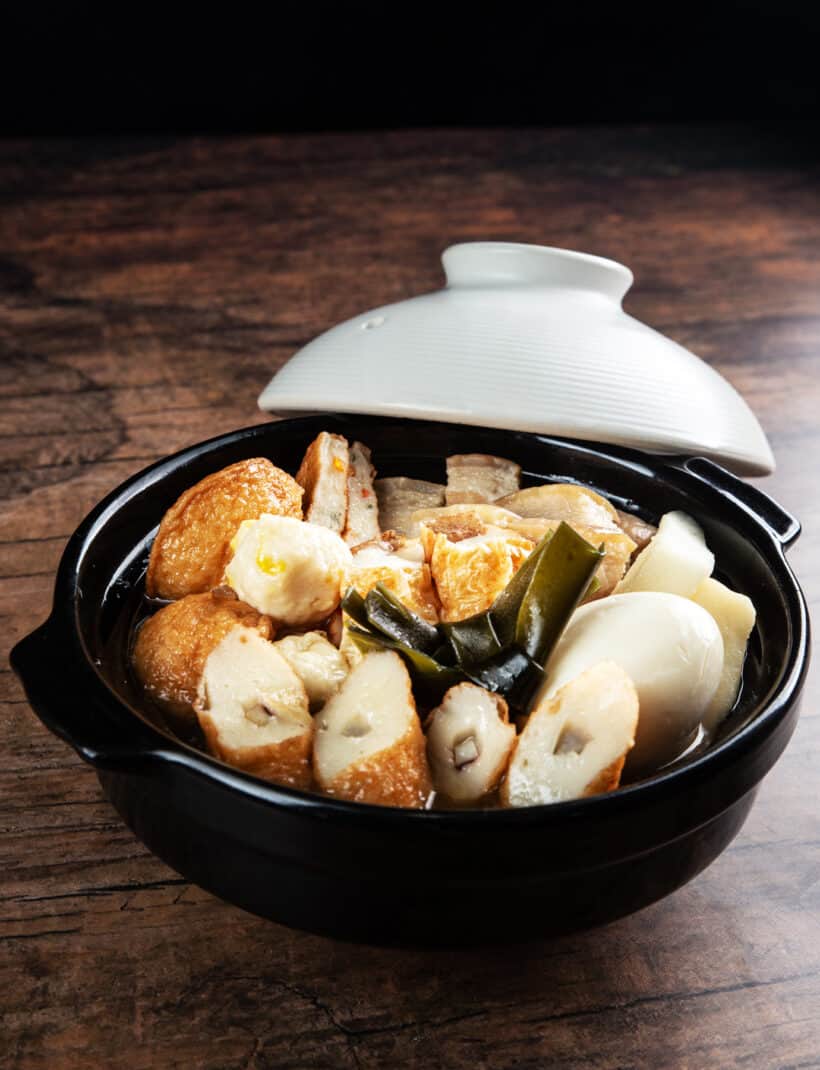
Types of Oden
There are many styles of oden depending on the region of Japan and households. For exmaple, there are Kanto style, Kansai style, Nagoya style, or Okinawa style oden.
Some varieties have a darker color & stronger broth, others have a lighter color & slightly sweet broth, while some oden use a miso-flavored broth.
Where to Find Oden
Oden is usually sold in convenience store chains, specialty oden ya, food carts, izakayas, festivals, and even vending machines.
Besides serving oden in a hot pot, you can also find skewered oden, oden served as a side dish, or sold in individual pieces as snacks.

How to Make Oden
It’s easy and simple to make homemade oden.
- Make oden base broth
- Cook oden ingredients & let them soak in the flavorful broth
Flavor & Texture: The ingredients’ textures can vary from soft & tender, bouncy, chew-to-the-bite, fluffy, to spongy. The flavors can vary from umami, sweet, salty, to soaking up the flavors from the broth.
Serve: Oden is usually served hot in a small clay pot, skewered, or individual pieces at konbini (Japanese convenience stores).
Ease Level – Super Easy: You can make homemade oden with minimal preparation, few ingredients, basic cooking skills, and simple equipment.
Cooking Time: You can make this delicious oden soup stew in roughly 1 hour and 15 minutes.
Equipment: You can make this on the stove, but also use the Instant Pot or pressure cooker for convenience and save time.
Ingredients you need to make Oden
Here are the ingredients for making Oden:
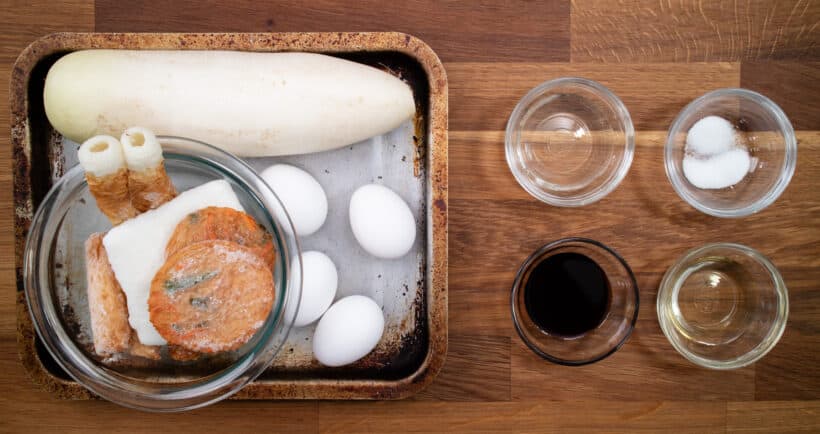
Oden Base Broth: we used pork belly, daikon, dashi, fine salt, granulated sugar, mirin, regular soy sauce, sake to craft this oden recipe.
Oden Ingredients: we included daikon, pork belly, assorted fish cakes, soft-boiled eggs, and cooked kombu (from our dashi recipe).
*Note: You can also add other ingredients such as Konjac, Shirataki Noodles, Mochi Kinchaku, or Fried Tofu.
Let’s take a look at 7 of the ingredients in this homemade oden recipe.
1. Pork Belly
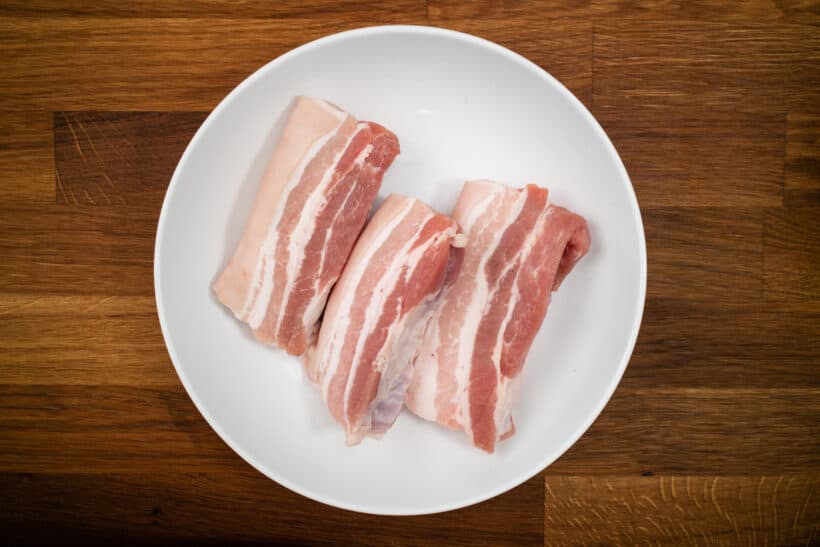
Pork belly is not a usual suspect in oden, but it pairs very well with the dashi flavor and adds another layer of flavor to the dashi.
Related Pork Belly Recipes:
- Crispy Pork Belly (Chinese Roast Pork or Siu Yuk)
- Taiwanese Braised Pork (Lu Rou Fan)
2. Daikon
Daikon (Japanese: 大根 “big root”) aka daikon radish is the highlight of eating oden for many people!
Alternative Names: White radish, winter radish, oriental radish, Japanese radish, Chinese white radish, Chinese turnip, lobak (Chinese: 白蘿蔔).
Nutrition: It’s a very low-calorie, high-fiber cruciferous vegetable related to broccoli, kale, and cabbage. Packed with various nutrients like vitamin C.
Flavors & Textures: It has a distinct yet mild flavor profile. When eaten raw, it’s crunchy, juicy, slightly spicy, sweet, and tangy; when cooked, it’s mellowy sweet, soft with a full satisfying bite. It can soak in a lot of flavors like a sponge.
Usage: It’s commonly used in soups, salads, stews, curries, rice dishes, pickled, or as a garnish.
*Pro Tip: Daikon is different from the mild green variety known as Green Radish or Green Turnip (Chinese: 青蘿蔔).
3. Dashi
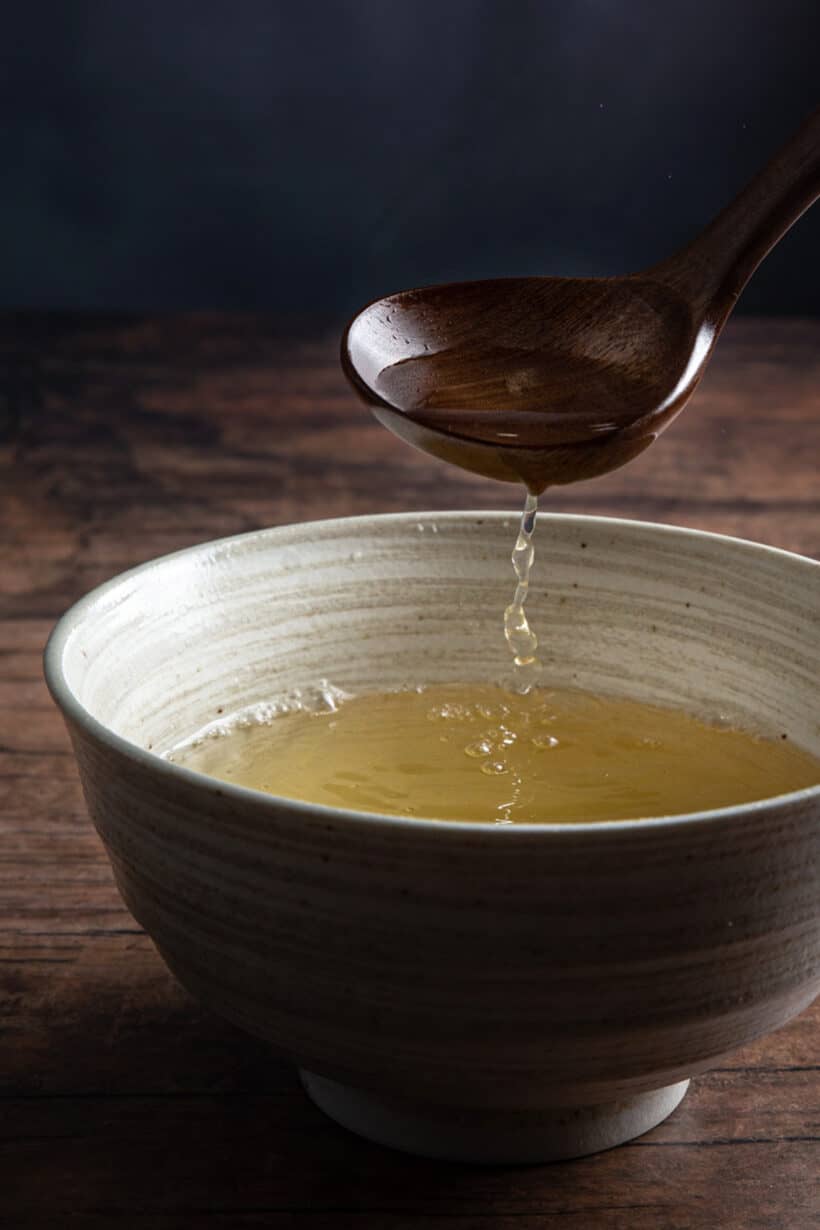
Dashi is a clear stock that’s like an intense umami elixir. It’s packed with clean, distinct umami (savory) and a slightly smoky flavor of the sea. It magically enriches & boosts the depth of a dish.
For more detail & step-by-step recipe: How to Make Dashi
Instant Dashi vs. Homemade Dashi
We did a side-by-side experiment making oden with Homemade Dashi vs. Instant Dashi (HonDashi)
The oden made with Homemade Dashi tastes better than the instant dashi by quite a big margin. It has a big difference in terms of complexity & depth of flavors & aroma.
Since the daikon and pork will soak in all the dashi flavors, it’s especially tasty when using homemade dashi. However, if you’re short on time or energy, Instant Dashi is still great considering the convenience.
4. Soy Sauce
There are endless types and brands of soy sauces. It’s important to know that every batch of soy sauce (even with the same brand) can vary in flavor, aroma, texture, level of saltiness, savoriness, & thickness.
*Tip: Try to find a high-quality Japanese soy sauce for this recipe. If not, you can use regular soy sauce. Just make sure to taste & adjust according to the saltiness of your soy sauce.
5. Mirin
Mirin (Japanese: 味醂 or みりん) is a type of Japanese sweet cooking rice wine. It’s a staple ingredient in Japanese cuisine. It’s similar to sake, but with lower alcohol content and higher sugar content.
Types of Mirin: 3 of the most common types of mirin are hon mirin (true mirin), shio mirin (salt mirin), shin mirin (new mirin).
Flavors & Textures: subtly sweet and tangy
Usage: You can use mirin in a wide variety of dishes including dipping sauces, broths, marinades, or glazes.
*Note: Mirin is an optional ingredient for this recipe, but definitely use it if you’re able to.
Aji Mirin vs Hon Mirin (本みりん)
Hon Mirin is true mirin while Aji Mirin is a substitute for real mirin.
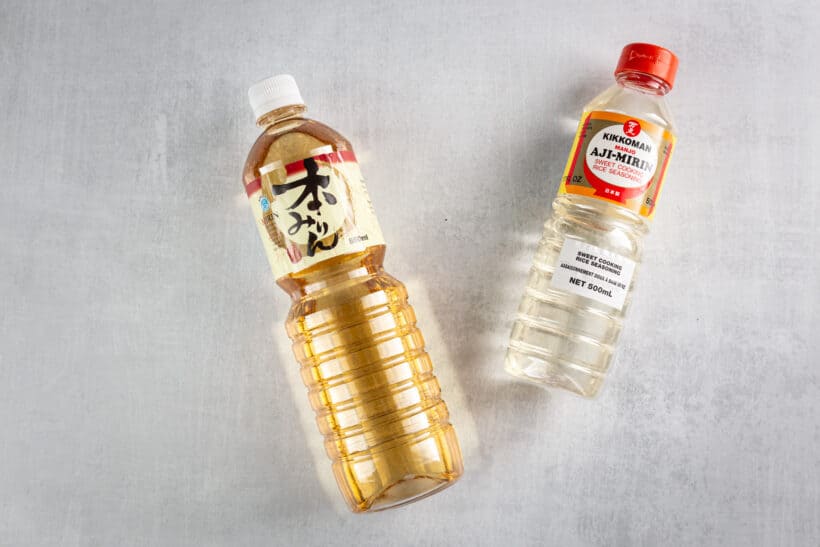
So, if you have access to Hon Mirin, we recommend using Hon Mirin over Aji Mirin, because it tastes so much better.
Recipes that Use Mirin:
6. Sake
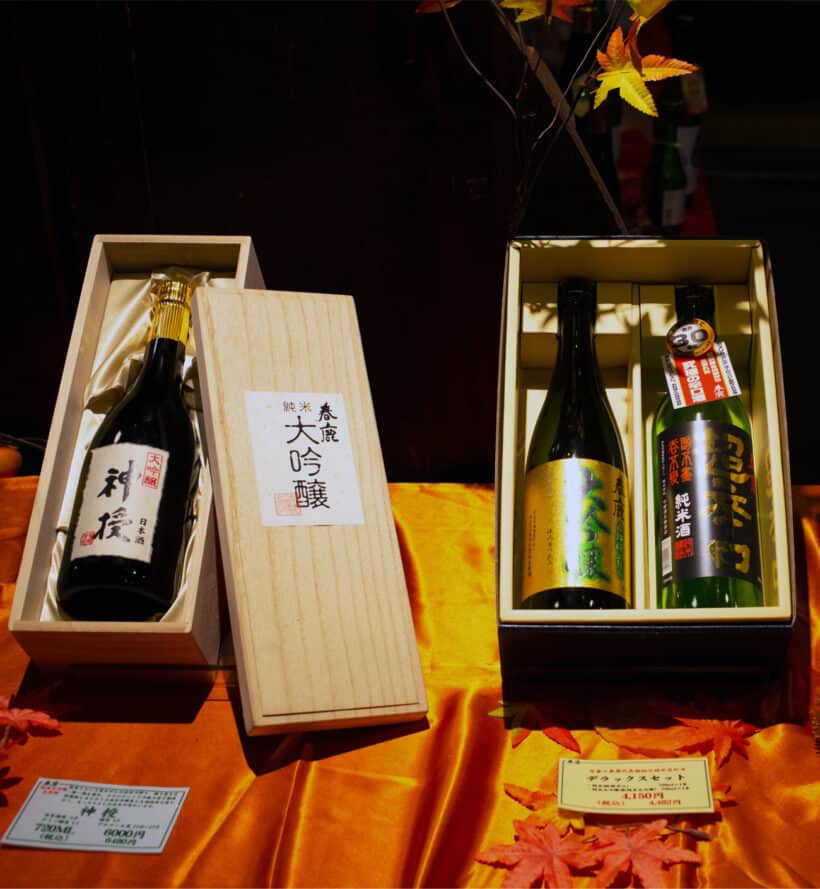
Sake is a type of fermented rice beverage, commonly known as Japanese rice wine. It’s also a staple ingredient in Japanese cuisine that adds umami (savoriness) and sweetness to the dish.
There are many varieties of sake that vary in texture, aroma, and flavorful profile (i.e. sweet, fruity). Usually, the more expensive sake are reserved for drinking and the inexpensive ones for cooking.
You can use sake in marinades, soups, stews, sauces, stir-fries, brine, baked goods, and so much more!
*Note: Sake is an optional ingredient for this oden recipe, but we recommend using it if possible.
7. Fish Cakes
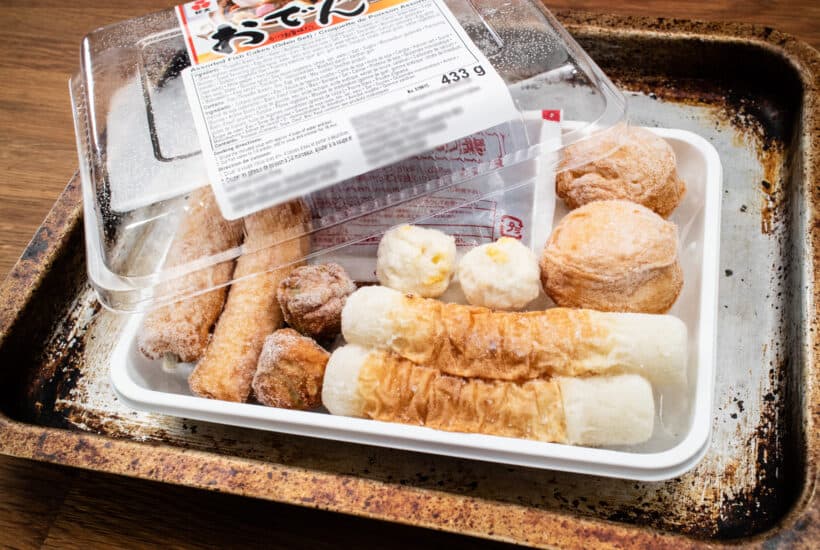
Assorted Fish Cake Oden Set: We currently use a grocery delivery service, so it’s easiest to use an assorted fish cake set. You can get these sets from most Asian supermarkets in the frozen aisle. The Instant oden broth packet that comes with the set is usually not that good. If you like, you can save it for late-night noodles.
Alternatively, you can pick and choose your own favorite fish cakes. 🙂

Tools for Japanese Oden
Step-by-Step Guide: Japanese Oden Recipe
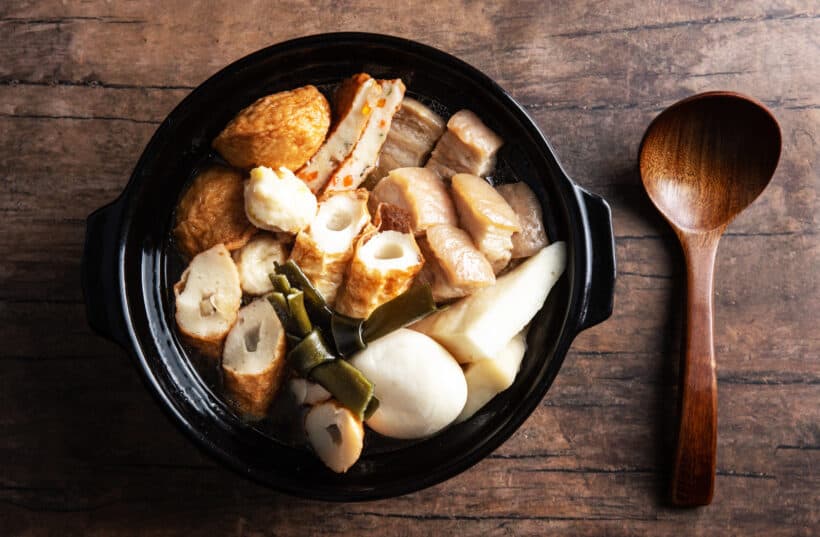
Prepare Ingredients
Daikon: Peel and cut daikon into 1¼” thick chunks.
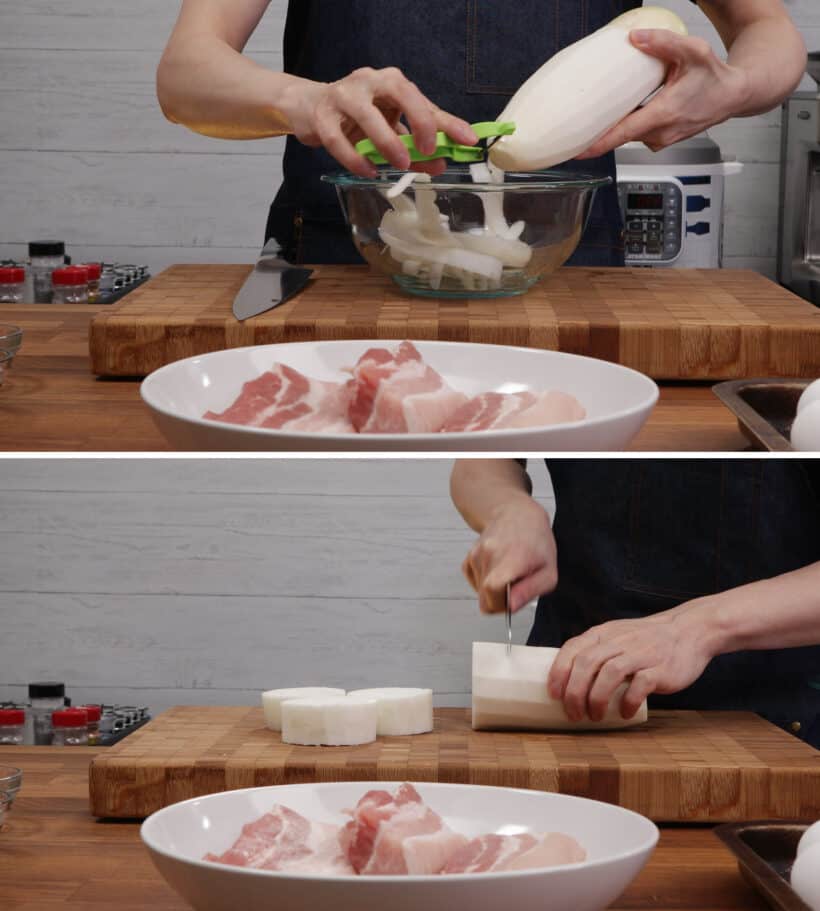
Pork Belly: We want the daikon to be slightly thicker than the pork belly, so cut the pork belly into 1″ thick chunks.
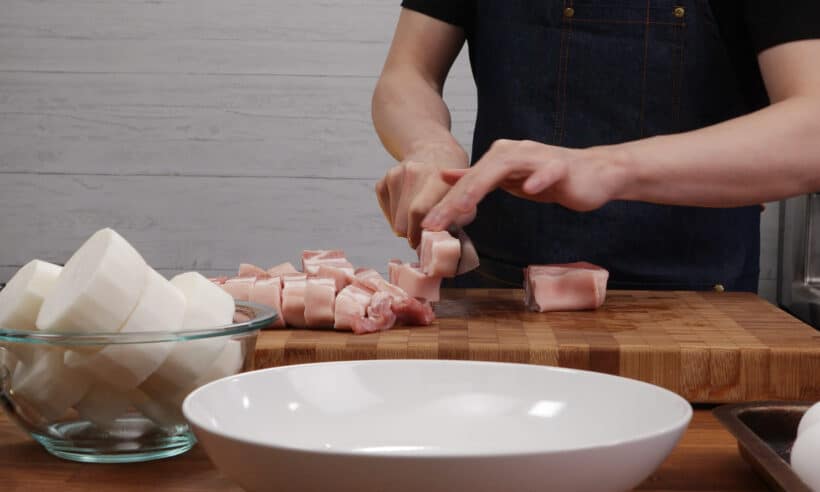
Dashi: You can make homemade dashi with this dashi recipe. It’s really easy and better than Instant Dashi (HonDashi).
- Substitute with Instant Dashi: If you don’t want to make your own dashi, mix 3g dashi powder with 2 cups (500ml) of water.
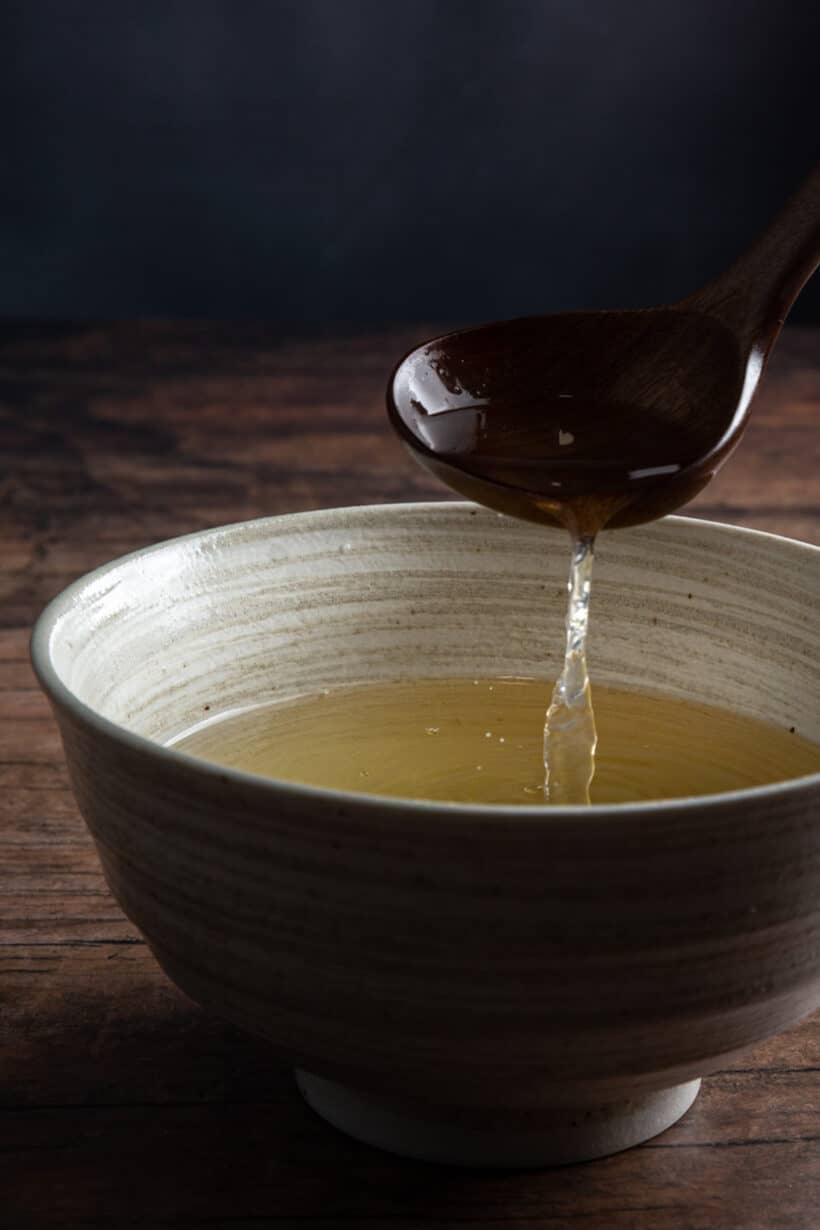
Optional – Clean Oden Ingredients
*Note: This cleaning step helps keep the final oden broth clear and less oily. It’s a recommended step, but it’s optional.
First, bring 5 to 6 cups of cold water to a boil in a pot.
1. Assorted Fish Cakes
Add the assorted fish cakes to the pot, then cook them for a minute to remove the oil on the surface.
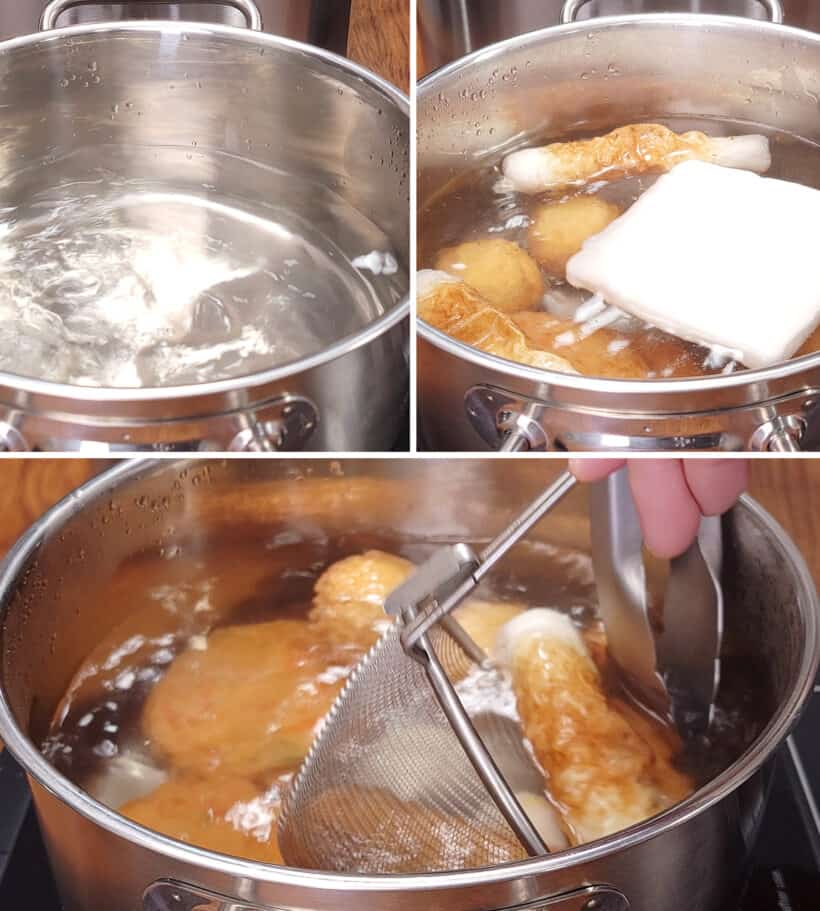
Now, rinse the assorted fish cakes in cold water, then drain well.
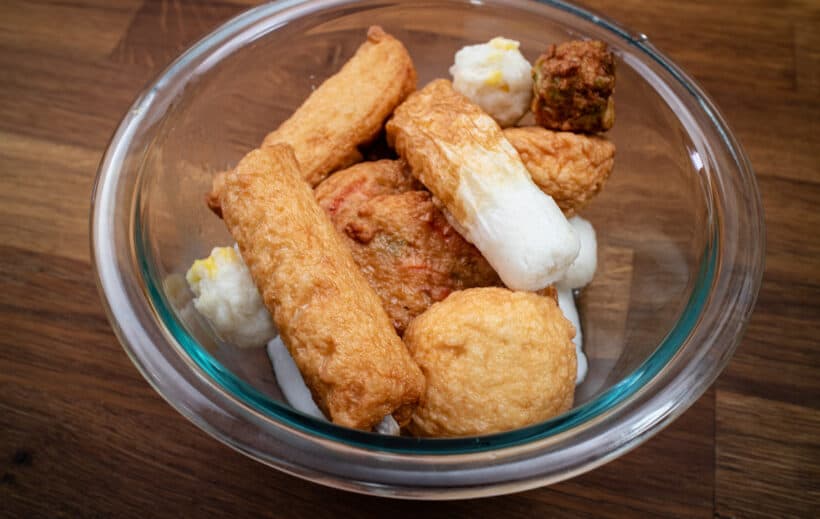
2. Pork Belly Chunks
Add the pork belly chunks to the pot, then boil them for 3 to 4 minutes to clean and remove the excess fat.
Now, rinse the pork belly chunks in cold water, then drain well.
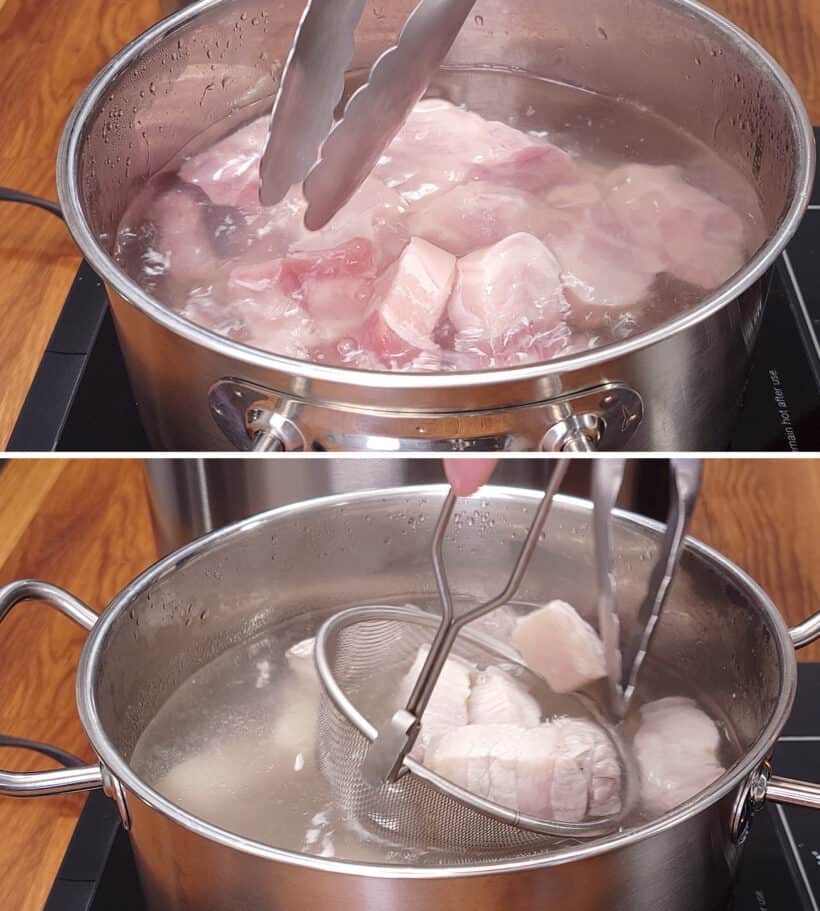
3. Eggs
If you’re serving eggs in your oden, boil the eggs in the water.
For soft-boiled eggs, boil eggs for 5.5 to 6 minutes. Drain & place them in cold water to stop the residual heat from further cooking the eggs.
Pressure Cook Pork Belly & Daikon
First, add ¼ tsp (2g) fine salt, ½ tsp (2.5g) granulated sugar, 1½ tbsp (22.5ml) mirin, 1½ tbsp (22.5ml) regular soy sauce, and 2 tbsp (30ml) sake in the Instant Pot.
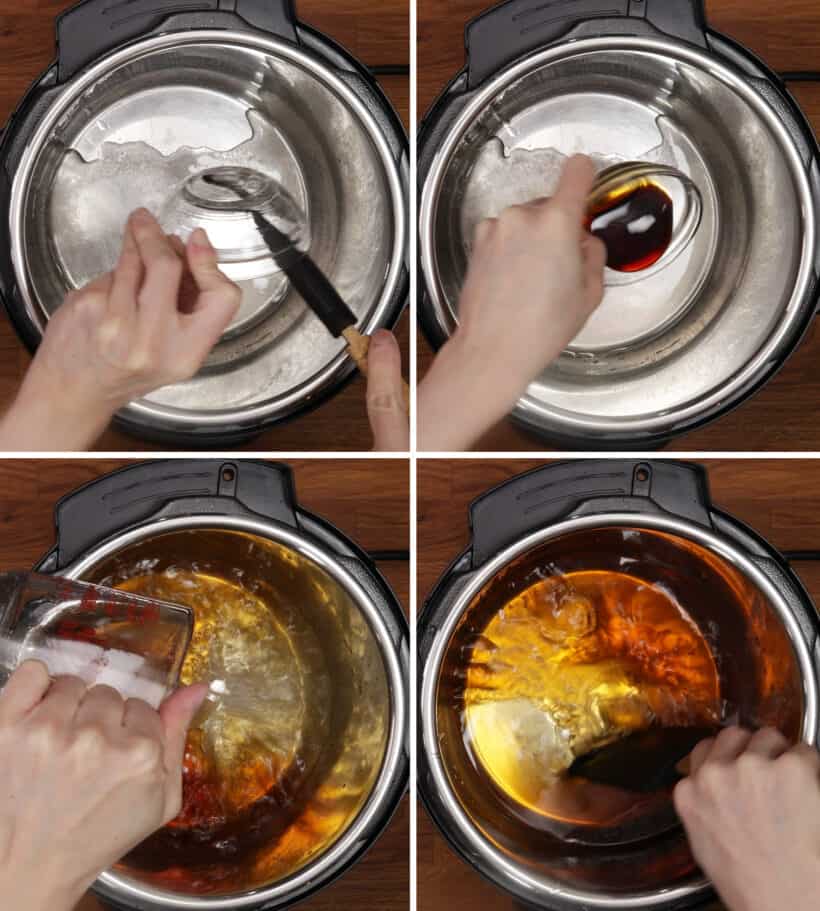
Add 2 cups (500ml) of dashi in Instant Pot, then mix well.
Now, add the daikon chunks and pork belly in Instant Pot.
*Note: Make sure the daikon chunks are mostly submerged in the dashi mixture and the pork belly chunks are at least halfway submerged in the dash mixture.
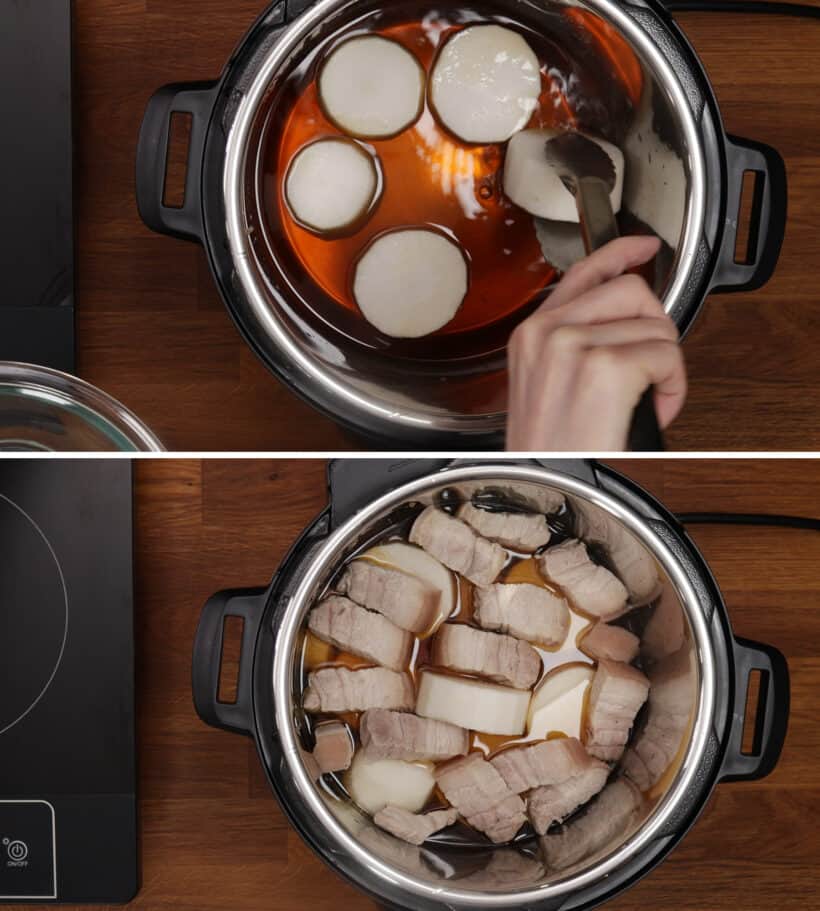
With Venting Knob in Venting Position, close the lid, then turn Venting Knob to Sealing Position.
- Pressure Cooking Method: Pressure Cook at High Pressure for 3 minutes, then Natural Release for 15 minutes.
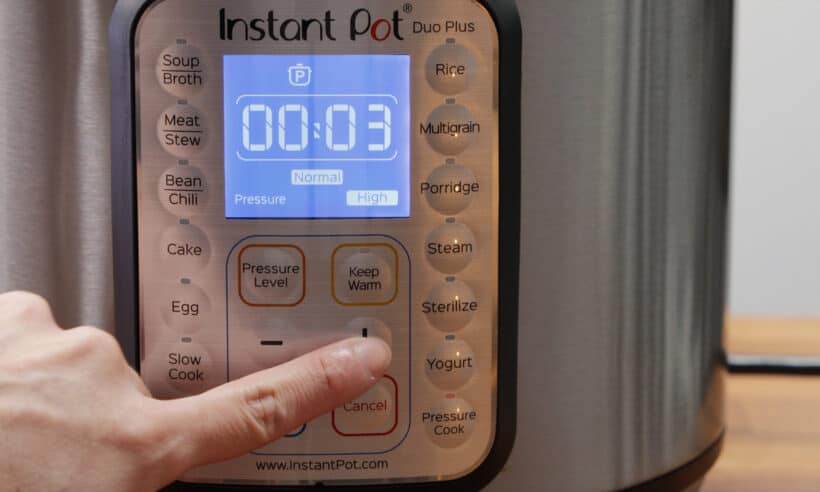
After 15 minutes, release the remaining pressure by turning the Venting Knob to Venting position.
Then, remove the lid carefully.
This oden broth makes the room smells so delicious! yum~
Simmer & Arrange Oden
First, skim off the oil on the surface if you like.
Taste the soy dashi mixture and see if it needs more seasoning.
*Note: Our broth had balanced flavors and didn’t need any more salt.
Now, carefully rearrange the daikon and pork belly to make room for the other ingredients.
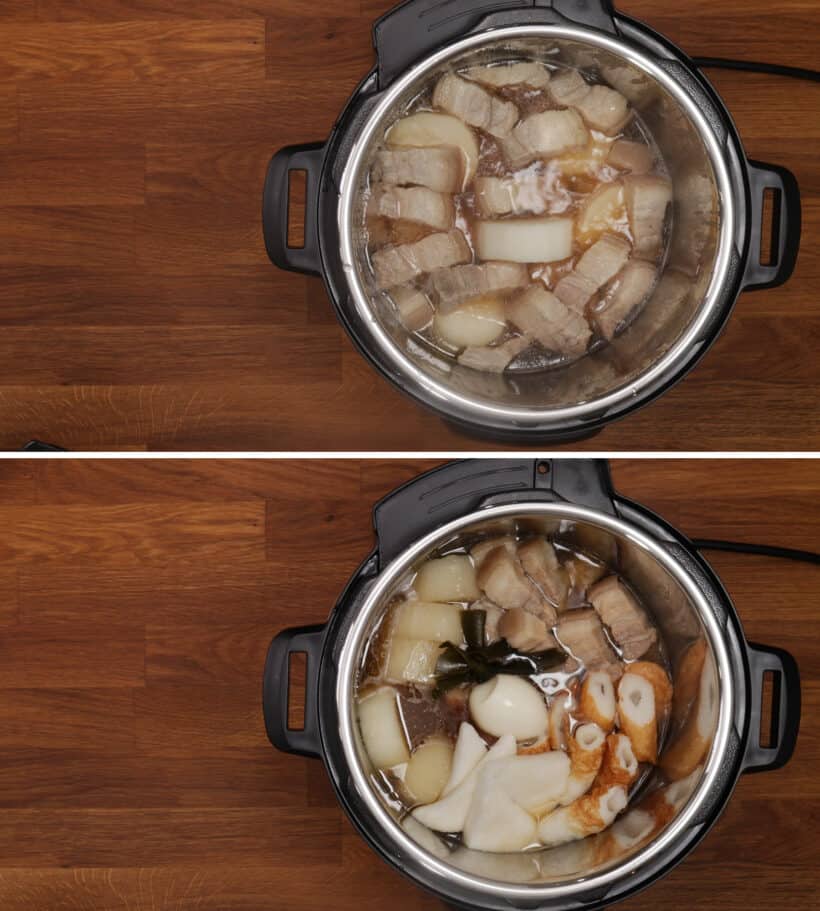
Add the assorted fish cakes, cooked kombu, and soft boiled eggs in Instant Pot.
Bring the pot back to a simmer with the “Saute Normal” function.
Then, turn off the heat (“Cancel” button) and change to “Keep Warm” mode.
Serve Oden
Let the ingredients sit in the broth for another 10 to 20 minutes to absorb the flavors, aroma, & flavorful juice.
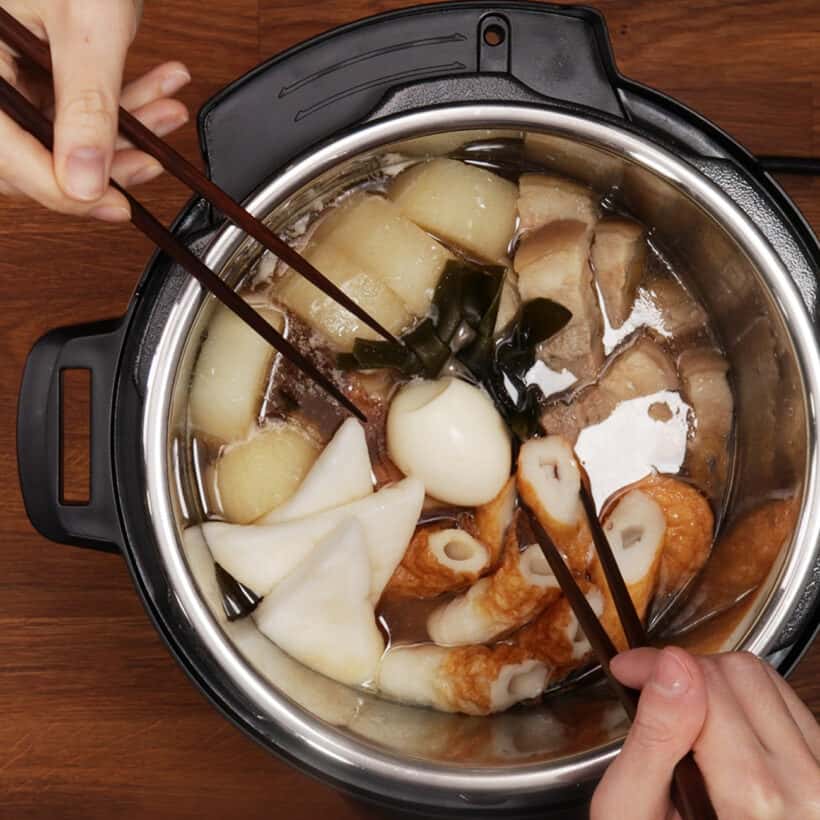
Instant Pot Oden
You can serve the Instant Pot Oden right in the Instant Pot (above photo) or in a clay hot pot (below photo).
If you’re serving the oden right in the Instant Pot, use the “Keep Warm” function to keep the ingredients warm as you dig in & enjoy the pot of goodies!
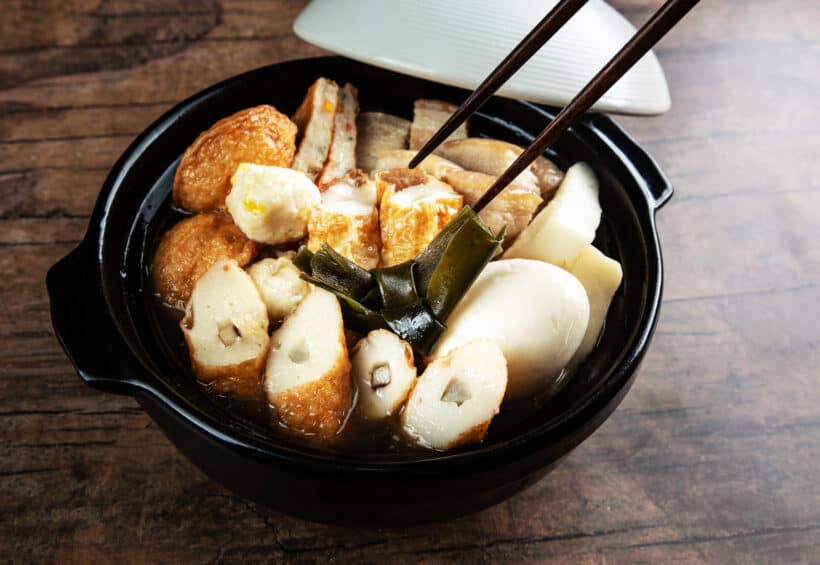
Optional Serving Sauce: You can eat oden with karashi (Japanese yellow mustard) and yuzu (citrus paste) on the side.
Pro Tip: Make-Ahead & Soak Overnight
If you have time, make this oden recipe ahead of time or make a bigger batch, then let the ingredients soak in the tasty broth overnight.
The ingredients will taste even better, bursting with flavors after soaking in all the flavorful & aromatic juice, especially the daikon!
Check out this daikon below!
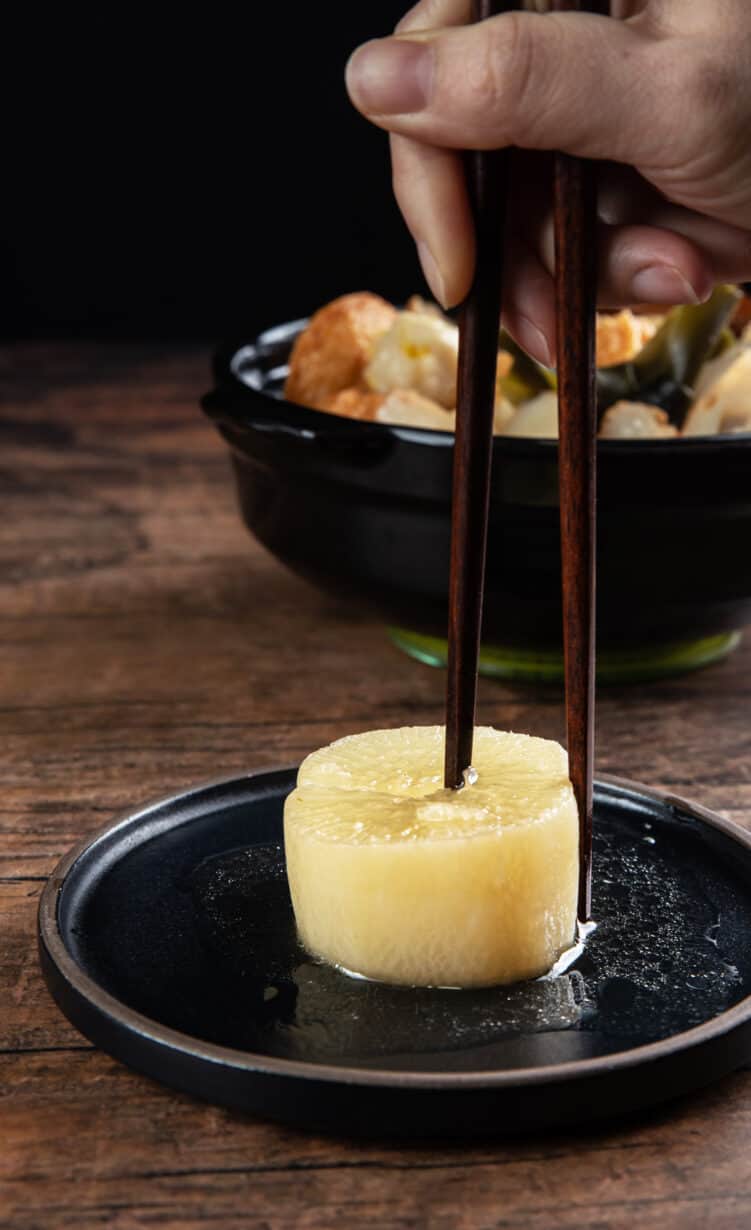
In one of our experiments, we let our ingredients sit overnight, then taste tested the oden the next day.
The daikon was soaked all the way through to the center, like a flavor sponge! We were able to cut through it with chopsticks, but it wasn’t mushy at all. The daikon was soft & tender, yet it offers a nice satisfying mouthfeel, bursting with juicy flavors & aroma. It was so delicious!
*Eating Tip: Just be careful as you eat the daikon, because the flavorful juice bursting from your bite can be quite hot.
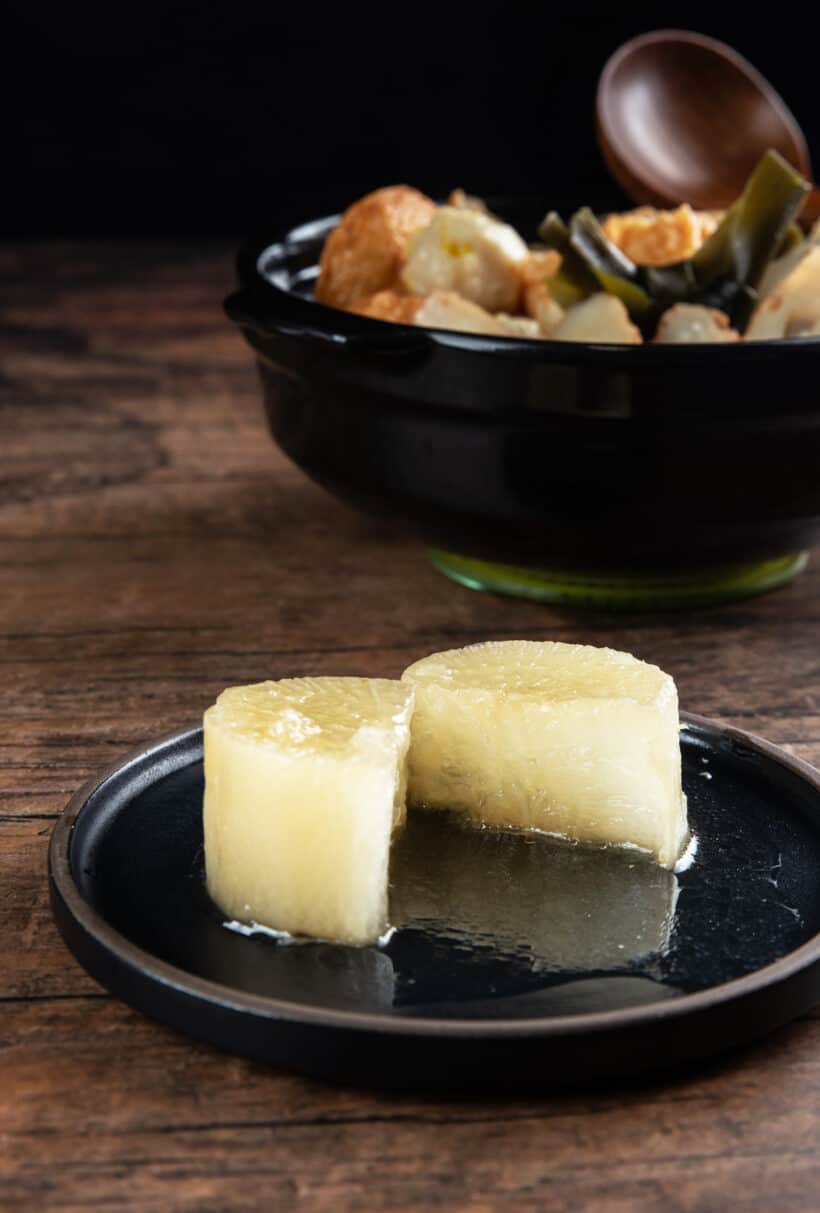
Side Dishes You can Enjoy with Oden
Enjoy your Tasty Comfort Japanese Oden!
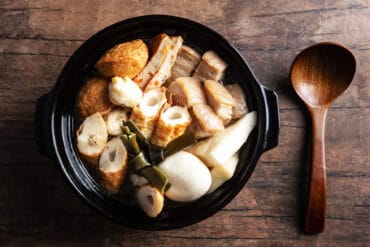
Oden (Japanese Fish Cake Stew)
Ingredients
- 1¼ pounds (580g) pork belly (1” thick)
- 1¼ pounds (550g) daikon (1¼” thick)
- 2 cups (500ml) dashi (or substitute with 3g dashi powder with 500ml water)
- ¼ teaspoon (2g) fine salt
- ½ teaspoon (2.5g) granulated sugar
- 1½ tablespoons (22.5ml) mirin (optional)
- 1½ tablespoons (22.5ml) regular soy sauce
- 2 tablespoons (30ml) sake (optional)
- Your choice of oden ingredients - assorted fish cakes, eggs, kombu
Equipment
♥ Share this Recipe so We can create more yummy recipes for you. Thank you 🙂
Instructions
- Prepare Ingredients: Daikon: Peel and cut daikon into 1¼" thick chunks. Pork Belly: Cut pork belly into 1" thick chunks. Dashi: Make homemade dashi or use Instant Dashi. For instant dashi, mix 3g dashi powder with 2 cups (500ml) water.
- Optional - Clean Ingredients: Bring 5 to 6 cups of cold water to a boil in a pot. Assorted Fish Cakes: Cook the assorted fish cakes in boiling water for a minute. Rinse the fish cakes in cold water, then drain well. Pork Belly: Boil the pork belly chunks for 3 to 4 minutes to clean and remove the excess fat. Rinse the pork belly chunks in cold water, then drain well. Eggs (optional): Boil the eggs in the water for 5.5 to 6 minutes (soft-boiled eggs). Place them in cold water to stop the eggs from further cooking.*Note: This step helps yield a clear & less oily oden broth.
- Pressure Cook Pork Belly & Daikon: Add ¼ tsp (2g) fine salt, ½ tsp (2.5g) sugar, 1½ tbsp (22.5ml) mirin, 1½ tbsp (22.5ml) regular soy sauce, and 2 tbsp (30ml) sake in Instant Pot. Add in 2 cups (500ml) of dashi, then mix well. Add in daikon chunks and pork belly chunks. *Note: Ensure the daikon chunks are mostly submerged in the dashi mixture and the pork belly chunks are at least halfway submerged in the dash mixture. With Venting Knob in Venting Position, close the lid, then turn Venting Knob to Sealing Position. Pressure Cook at High Pressure for 3 minutes, then Natural Release for 15 minutes. Remove the lid carefully.
- Simmer & Arrange Oden: Skim off the oil on the surface if you like. Taste the oden broth and see if it needs more seasoning. Carefully rearrange the daikon and pork belly to make room for the other ingredients. Add the assorted fish cakes, cooked kombu, and soft boiled eggs in Instant Pot. Bring the pot back to a simmer with the "Saute Normal" function. Turn off the heat ("Cancel" button) and change to "Keep Warm" mode.
- Serve: Let the ingredients sit in the broth for another 10 to 20 minutes to absorb the flavorful broth. Optional Serving Sauce: Serve oden with karashi (Japanese yellow mustard) and yuzu (citrus paste) on the side. Enjoy~
Notes
Nutrition
All Our Pressure Cooker Recipes
*Disclosure: We are an Amazon Influencer/Amazon Associate. This means that if you decide to purchase items or services on Amazon through our links on Pressure Cook Recipes to Amazon, Amazon will send a small commission to us at no additional costs to you. Thank you!

